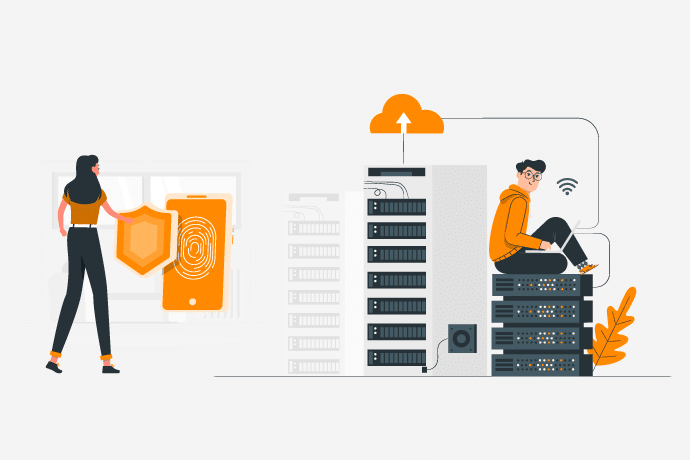
Seamless integration of OAuth 2.1 with cidaas
Authentication and authorization of users is an essential part of modern web applications. OAuth 2.1 offers an updated and improved version of the widely used OAuth 2 protocol, providing additional security features and an improved user experience. In this blog post, we will explore the benefits and differences of OAuth 2.1 compared to OAuth 2 and show how you can seamlessly integrate cidaas into your application.
Advantages of OAuth 2.1:
- Improved security: OAuth 2.1 introduces stricter guidelines for the use of redirect URIs and the implementation of PKCE (Proof Key for Code Exchange), which increases security against phishing attacks.
- Standardized best practices: With OAuth 2.1, many best practices that were often optional in OAuth 2 will become mandatory in order to standardize implementation and minimize sources of error.
- Easier implementation: Thanks to the clear structure and defined standards, the implementation of OAuth 2.1 is often simpler and less error prone.
The most important differences between OAuth 2 and OAuth 2.1 at a glance:
- PKCE as standard: While PKCE (Proof Key for Code Exchange) was only recommended for mobile applications in OAuth 2, it will be mandatory for many client types in OAuth 2.1. This increases security against code injection attacks.
- Improved redirect URI validation: OAuth 2.1 requires stricter validation of redirect URIs to prevent abuse. These must match exactly and cannot contain wildcards.
- Token entropy: OAuth 2.1 recommends a higher entropy for access tokens to make brute force attacks more difficult.
- Deprecation of Implicit Flow: The Implicit Flow was no longer recommended in OAuth 2 as it is more susceptible to attacks. With OAuth2.1 it is now completely history.
Integration of cidaas with OAuth 2.1:
The integration of cidaas into your application can be realized in just a few steps, whereby both cidaas’ own SDKs and any other OAuth 2.1-compatible SDK or plugin can be used. Thanks to standardization, configuration is usually simple and configurative.
- Registration of the application: First, the application must be registered in the cidaas Admin UI to obtain the required client information. This provides the basis for further integration.
- Configuration of the redirect URIs: Make sure that the redirect URIs are configured correctly to avoid security vulnerabilities. OAuth 2.1 requires a precise match of the URIs, which further increases security.
- Configuration of scopes, roles and groups: Define the required scopes, roles and groups to determine which data and authorizations your application requires. This enables granular control over access to resources.
- Use of the cidaas SDKs: The cidaas SDKs offer a user-friendly way to implement the authentication and authorization processes. They support various programming languages and frameworks, which facilitates integration into different application architectures.
- Use of other OAuth 2.1-compatible SDKs: If you are already using an OAuth 2.1-compatible SDK or plugin, you can also use this for integration without any problems. Thanks to the standardization of OAuth 2.1, the configuration is usually uncomplicated and requires little adjustment.
- Optional additional configurations: Customize additional settings such as authentication methods, mandatory multi-factor authentication (MFA), consents to be requested and other configuration options to further tailor security and usability to your use case.
Practical tips for the implementation of OAuth2.1:
- Use PKCE: Ensure that PKCE is used as an OAuth 2.1 grant to maximize the security of your application.
- Check the redirect URIs: Regularly check and validate your redirect URIs to ensure that no unauthorized or outdated redirects are listed.
- Store tokens securely: Store access tokens securely, e.g. in encrypted cookies or in the secure memory of the device, to prevent misuse. Access tokens with a short validity period can also be used, which are then reissued via the refresh token flow.
- Use scopes selectively: Use only the necessary scopes to minimize access to sensitive data and to avoid excessive authorizations, thus increasing security.
- Regular security checks: Perform regular security checks of your OAuth 2.1 configuration and implementation to detect and fix vulnerabilities or configuration errors at an early stage. (You can also use the cidaas Security Dashboard for this)
Conclusion:
Switching to OAuth 2.1 with cidaas not only offers increased security, but also an improved user experience and easier implementation. Thanks to the support of cidaas SDKs and other OAuth 2.1-compatible SDKs or plugins, you can implement the integration quickly and effectively. Go for OAuth2.1 now and stay up to date with cidaas.
Don’t miss our deep dive workshop on the live integration of cidaas with OAuth 2.1 at cidaas connect 2024 to get practical insights and detailed instructions! Find out more here: https://connect.cidaas.com/


